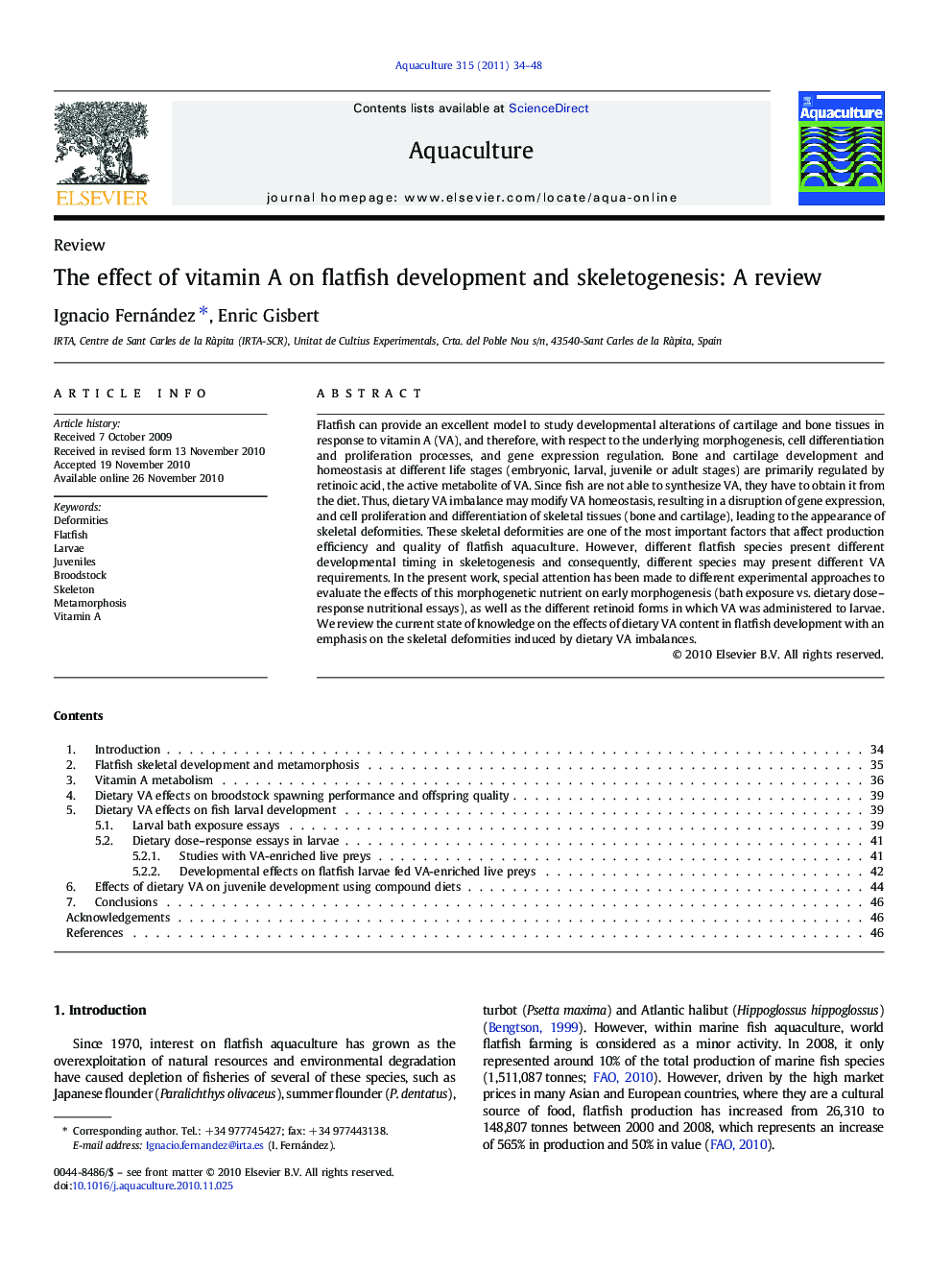| Article ID | Journal | Published Year | Pages | File Type |
|---|---|---|---|---|
| 2423223 | Aquaculture | 2011 | 15 Pages |
Flatfish can provide an excellent model to study developmental alterations of cartilage and bone tissues in response to vitamin A (VA), and therefore, with respect to the underlying morphogenesis, cell differentiation and proliferation processes, and gene expression regulation. Bone and cartilage development and homeostasis at different life stages (embryonic, larval, juvenile or adult stages) are primarily regulated by retinoic acid, the active metabolite of VA. Since fish are not able to synthesize VA, they have to obtain it from the diet. Thus, dietary VA imbalance may modify VA homeostasis, resulting in a disruption of gene expression, and cell proliferation and differentiation of skeletal tissues (bone and cartilage), leading to the appearance of skeletal deformities. These skeletal deformities are one of the most important factors that affect production efficiency and quality of flatfish aquaculture. However, different flatfish species present different developmental timing in skeletogenesis and consequently, different species may present different VA requirements. In the present work, special attention has been made to different experimental approaches to evaluate the effects of this morphogenetic nutrient on early morphogenesis (bath exposure vs. dietary dose–response nutritional essays), as well as the different retinoid forms in which VA was administered to larvae. We review the current state of knowledge on the effects of dietary VA content in flatfish development with an emphasis on the skeletal deformities induced by dietary VA imbalances.
